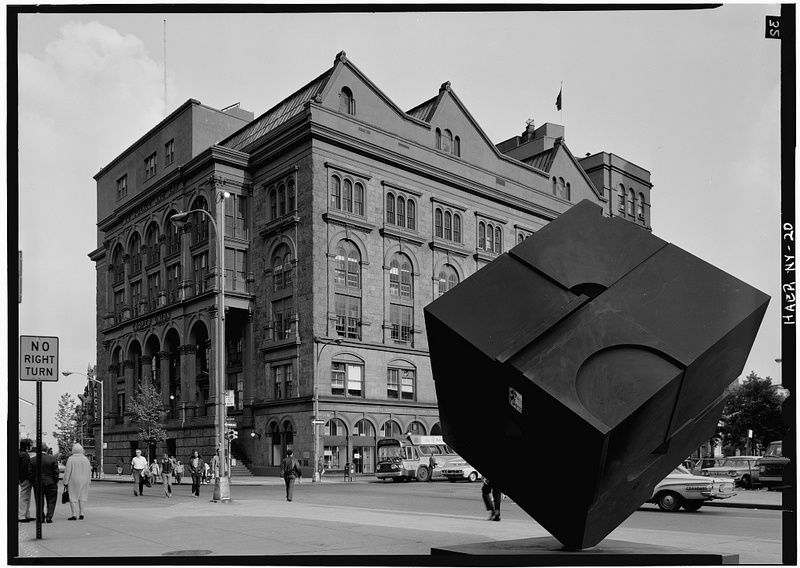


Reports of the return of the Astor Place cube return have been circulating since January, but have recently gone viral, setting the topic of conversation for thousands of New Yorkers. Unfortunately, these reports are (probably) wrong.
The source of this excitement came from the city itself in a publicly available weekly construction bulletin for Astor Place, which marked the sculpture’s re-installation as June 22, 2016. But a source close to the renovation process in a local organization tells us the cube will stay in New Jersey for a bit longer due to delays.
For various reasons, the cube is not likely to be back this week. So eager visitors may have to contain their anticipation a few days more.
But what is a few days compared to a few years? Alamo, the steel-plated Astor Place sculpture, has been missing from its home since renovation began in 2014. Starting today, there is a week-long event series, Creativity Cubed, in honor of its forthcoming return,
The cube is made of painted CorTen steel, and sits atop a pedestal making it a towering 15-feet tall. It was created in 1966 by Midwestern sculptor Bernard “Tony” Rosenthal, who insisted upon its please-do-touch existence. In 1980, Rosenthal said to the New York Times, “I like to make public sculptures in which people can participate, that have a functional purpose as well as an esthetic one.”

The Astor Place cube, Alamo, in the 1970s. Photo courtesy Cooper Union Archives.
And although many New Yorkers have become (typically) unsurprised at walking around the corner to find just another outdoor art exhibition put up overnight, it’s important to remember that Alamo was the first permanent contemporary outdoor sculpture installed in New York City.
In addition to the Astor Place model, Rosenthal made at least 6 more: Detroit, Michigan (1967), University of Michigan in Ann Arbor (1968), Connecticut College in New London, Connecticut (1972), Florida International University in Miami (1983), Pyramid Sculpture Park in Hamilton, Ohio (1994), and Southampton (2007). Several miniatures of his work also exist in personal collections, like this secret one that we revealed in May.
Rosenthal passed away in 2009, but he left behind a legacy in art that contributed to memories in thousands, if not millions, of New Yorkers.
Next, read about Mini Version of Astor Place “Alamo” Cube is On Display at NYC’s National Academy. Get in contact with the author on Twitter @HeySamCampbell


